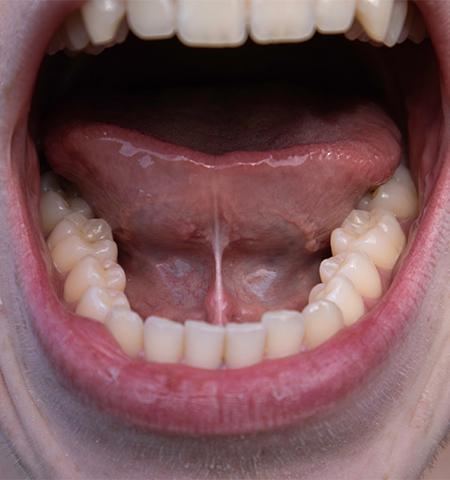 They’re like little puzzles for our mouth muscles…
They’re like little puzzles for our mouth muscles…
Some kids might find it challenging to pronounce certain sounds clearly. Others might have trouble chewing or swallowing smoothly.
One common puzzle is “tongue tie,” where the skin under the tongue is a bit short, making it tricky for the tongue to move around.
Another puzzle is “tongue thrust,” where the tongue pushes forward during swallowing instead of following its usual path.
Tongue tie and tongue thrust can make talking, eating, and swallowing (even feeding, sleeping, and BREATHING) a tricky riddle.
 Tongue tie can be a hard knot to unravel.
Tongue tie can be a hard knot to unravel.
We’re less concerned with the shape and size of the tie and more with its impact. So, even if you have the most noticeable tie, if it’s not causing issues, the saying holds true: “If it ain’t broke, don’t fix it!
Functional exams are crucial in showing how it affects your or your child’s daily activities. A tongue tie might influence you differently throughout the day, impacting speech, eating, breathing, or even your posture.
If a tie is causing trouble, our mission is to figure out how and why.
Our focus is boosting its function and range of motion and giving you all the information you need to make the right decisions.
And if you need services from another professional (we can’t rearrange teeth – that’s an orthodontist’s job!), we’ll put you in touch with the right experts to help.
 Tongue thrust is like a sneaky habit.
Tongue thrust is like a sneaky habit.
It’s where the tongue pushes forward during swallowing instead of going up against the roof of the mouth.
This can mess with speech and oral muscle coordination, sometimes leading to issues like lisps or difficulty pronouncing certain sounds.
If you notice that you or your child consistently push their tongue forward during activities like speaking or swallowing – it’s time to seek help.
This sneaky habit can lead to orthodontic relapse, making teeth alignment tricky. This can affect speech (making sounds sound funny) or challenges with eating and chewing. It can make you self-conscious in many ways, including the need to “mouth-breathe.”
But no worries! We’ve got cool tricks and exercises to help set the tongue on the right path and tackle these challenges!
Getting professional assistance early is key to promoting optimal oral health and confidence.
I know this seems complex…
Doctors, dentists, ENTs, or even speech therapists might not catch it. (They didn’t teach us about it in school… or they might think it’s not a big deal.)
That’s why it’s crucial to find an expert who knows about it for a thorough check-up.
If you or your child has a tongue, lip, or cheek tie diagnosis, call us today for your free consultation.

